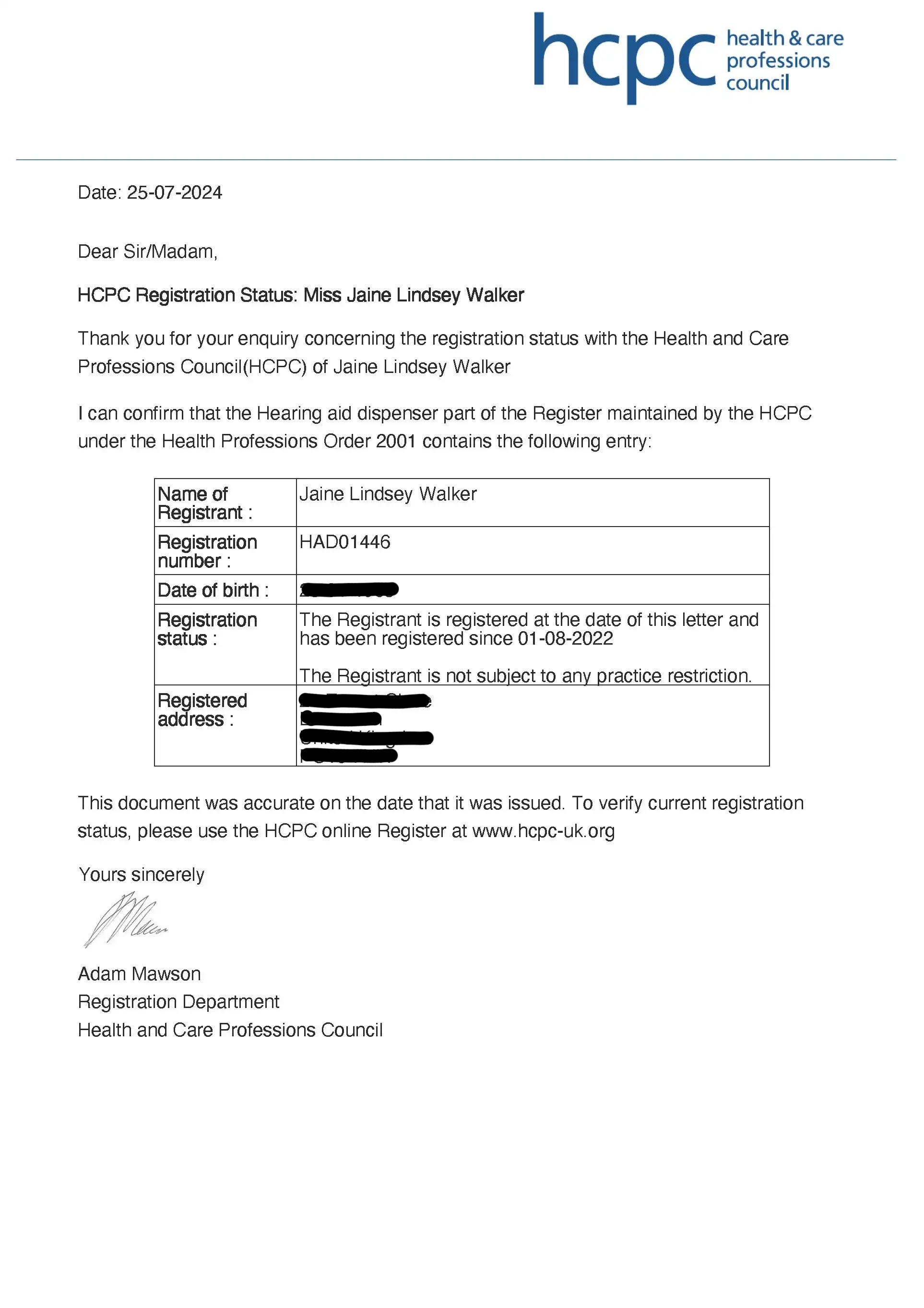Why should you go to a qualified ear wax removal practitioner?

A qualified ear wax removal practitioner is a healthcare professional with specialised training and credentials to safely and effectively remove ear wax. Here are some examples of qualified practitioners:
- Otolaryngologist (ENT Specialist): A doctor who specializes in conditions of the ear, nose, and throat. They have extensive training in diagnosing and treating ear conditions, including ear wax removal.
- Audiologist: Registered with HCPC ( Health and Care Professionals Council) A healthcare professional specialising in diagnosing and treating hearing and balance disorders. Audiologists often provide ear wax removal services and have the necessary training and tools for safe removal.
- General Practitioner (GP): A primary care doctor who can perform ear wax removal, although their expertise may not be as specialized as an ENT specialist or audiologist. They can diagnose and treat common ear conditions.
- Nurse Practitioner (NP) or Physician Assistant (PA): These healthcare providers have advanced training and can perform ear wax removal procedures under the supervision of a physician.
- Hearing Aid Specialist: Professionals who fit and dispense hearing aids may also provide ear wax removal services. They have training in managing ear health related to hearing aid use.
Key Qualifications and Skills:
- Medical Training: They have undergone specific medical education and training related to ear health and ear wax removal.
- Licensing and Certification: They hold relevant licences and certifications to practice, ensuring they meet regulatory standards for patient care.
- Experience: They have practical experience in safely removing ear wax and dealing with potential complications.
- Use of Proper Tools: They use specialized tools and techniques, such as irrigation devices, micro suction, or curettes, to safely remove ear wax.
Why Choose a Qualified Practitioner:
- Expertise in Ear Health: They can identify if ear wax buildup is symptomatic of a broader issue.
- Reduced Risk of Injury: Their training reduces the risk of damage to the ear canal or eardrum.
- Sterile Technique: They use sterile techniques to prevent infection.
- Comprehensive Care: They can provide follow-up care and advice to prevent future ear wax buildup.
Using a qualified practitioner ensures that ear wax removal is done safely and effectively, reducing the risk of complications and promoting better ear health.
